Are you looking for precision and accuracy with large CNC machining? You’ve come to the right place.
This piece is an excellent material for anyone curious about large CNC machining, its benefits, and how to choose a large CNC machine. From materials to cost, read on to learn more.
What is Large CNC Machining?
This is a form of computer numerical control machining used to produce large mechanical components. It is a subtractive procedure similar to traditional CNC machining, although it is more complicated. In this procedure, the computer controls various machine tools to remove components from a sizable workpiece while the machining is being done.
The process of large CNC machining is divided into three steps:
1- Design Production Using CAD Software
To begin, a prototype model for a large machine part needs to be created. This model may be 2D or 3D. This is done with software, and the design depends on what the product needs. Operators’ essential characteristics, such as threads, tolerance, and construction lines, are all displayed in the CAD model design for efficient machining.
2- Creation of numerical codes from CAD files
The CNC machinery has a digital reader. It is crucial to translate the model into a format that CNC machines can recognize because they are unable to understand CAD models. Software called CAM is used for this process.
This program turns CAD models into formats that CNC machines can read and tells the CNC machine how to do things like cut sequences. Rotational and linear motion, toolpath, machine speed, and the workpiece are some examples of other instructions.
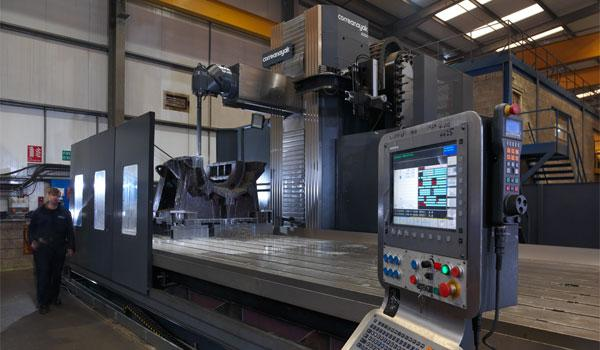
3- Workpiece and Tooling Preparation
The next stage is to prepare the CAD models for machining after they have been converted into codes. The steps of preparation include picking the tooling, configuring processes, and selecting the best CNC machine for the job.
It is important to consider design complexity, cost, and the material of the workpiece when deciding on the CNC machine and method to use. CNC machining is complete after this phase.
Note: Before you start the operation, you need to make one more check to make sure all the necessary cutting instruments are attached.
Types of Large CNC Machining
To produce items of varying dimensions and forms, large CNC machining is a necessary step in the production process. CNC machining can be used for anything from prototypes to mass manufacturing, thanks to its adaptability and versatility.
When working with metals like aluminum, steel, or copper, a CNC machine is typically used. This form of machining uses computers to control the machinery in order to create precise parts with finely detailed features.
Types of CNC Machining include:
- Vertical Machining Centers: This type of machine tool features multiple axes rotation and can handle drilling, milling, and boring operations in one setup. It has a wide range of applications, from automobile parts to generators and airplane motors.
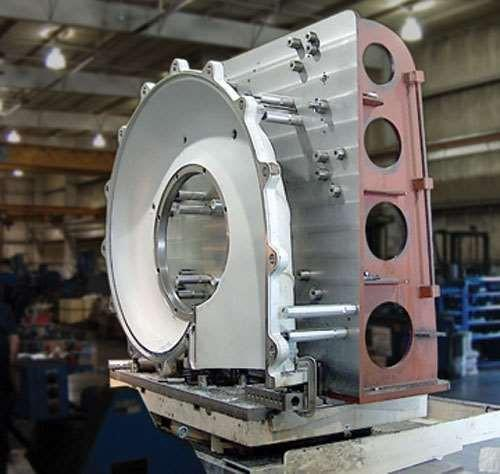
- Horizontal Machining Centers: This type of machine tool is ideal for large-scale production and offers the flexibility needed to easily switch between jobs without needing to change the set-up or webbing on the machine bed.
- 5-Axis Machining Centers: Featuring complex movement capabilities that enable more intricate shaping, these machines improve efficiency by combining three axial movements with two rotary ones so that multiple cutting operations can be conducted simultaneously. They can help produce turbine blade components as well as car parts like gears, transmissions, and intra-fits such as door latches or window regulators.

While each type has its own set of advantages and limitations depending on the intended purpose, all types offer cost savings over manual processes due to their precision and speed capabilities. Therefore, not only does large CNC machining lead to improved outcomes, but it also helps save time significantly in comparison to manual processes, which result in long lead times due to human intervention.
Benefits of Large CNC Machining
While traditional manufacturing processes with manual labor can be effective and produce high-quality work, many industries today find that precision CNC machining offers several advantages over standard manufacturing practices.
Large CNC machining offers the accuracy of parts that are machined above 3,000 mm in size and typically provides increased speed in part production by combining computer-driven cutting, drilling, routing, and grinding into one process. This leads to higher quality results at a lower cost than older processes by decreasing errors in both set-up time as well as actual run time.
Large CNC machining also provides added scalability, allowing manufacturers to easily complete larger tasks using fewer machines than would be required to achieve the same rigidity and accuracy in manual production. Additionally, due to the automation of the process, large CNC machining delivers higher accuracy than would be achieved with manual labor-based systems.
Moreover, as Computer Numerical Control (CNC) machinery is relatively consistent once it is properly set up for each new task, improved consistency in production results in improved precision across multiple parts.
Also benefitting from cost savings associated with mass production on a large scale, CNC machinery can help manufacturers achieve volume manufacturing requirements while at the same time cutting costs associated with labor budgets.
Finally, materials used for large-scale manufacturing often face corrosion when exposed to water or certain environmental conditions such as humidity levels or extreme temperatures. CNC machining processes are designed to minimize these issues without compromising part accuracy or tolerance stability.
It is perfectly suited for large-scale production objectives, therefore, making it a popular choice amongst worldwide manufacturers seeking improved scalability without sacrificing quality control standards or conforming dimensional capabilities.

Challenges of Large CNC Machining
Large CNC machining can be an intimidating task for any manufacturer. Even with advances in CNC technology, large-scale machining is still challenging due to the need for specialized tooling, a greater allowance for tolerances, enhanced work-holding strategies, and more extensive programming requirements.
If a complex finished part is desired, all of these considerations must be carefully evaluated and accounted for to ensure the successful production of the desired part.
Tooling
Tooling used in large CNC machining must take into account the size of the material being processed as well as the depth of cut desired. Specialized tool holders typically have integral coolant through capabilities so that proper cutting fluids can be applied during extended cuts.
Due to the large size of rough stock used in large machining operations, proper tool holders must also be chosen so as not to become deflective or vibrate on heavy cuts due to not having a tight grip on the material being processed.
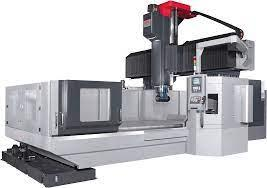
Tolerances
Rigid machine construction and special bellows covers are necessary when cutting larger parts due to increasing flexibility with increased part size leading to a shorter lifespan for cutting tools and increased allowance for tolerance stacking errors.
Further consideration should also be taken into account when making decisions about heat treating and finishing operations which are affected by part size and require more control from these processes during manufacturing operations.
Workholding
Workholding fixtures designed specifically to support larger components can help reduce overhanging loads, which may adversely affect accuracy over extended cuts, vibrations, or deflection, leading to potentially causing loss of finish and shortened life spans of expensive tools; adjustments should always be accounted for during setup procedures before making any contact with the material being processed.
Programming
More complex programming techniques that include subprograms should always be listed with consideration given to their effect on productivity based upon their function when including them in long-running cycles.
Attention should also be given to memory capacity limitations within controllers prior to executing programs containing overly long repetitive cycles or extremely deep pockets that may cause premature termination of cycles due to a lack of free system memory capacity within the controller.
Key Considerations for Large CNC Machining
Part Size
The size of the part is an important factor in big CNC machining. A machine with a big enough working area to handle a large part is necessary. The machine must also be sturdy and rigid enough to withstand the cutting pressures and the mass of the component being machined. In order to machine the part precisely and efficiently, it is crucial to use the appropriate machine.
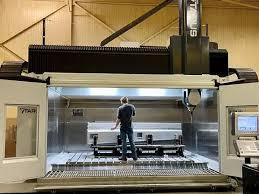
Tolerances and Accuracy Requirements
In large CNC machine manufacturing, accuracy and precision are of the utmost importance. It can be difficult to maintain accurate tolerances when working with a large part and a large workspace. Calibration of the machine’s accuracy is essential for producing machined components that meet all requirements. In addition, the manufacturing procedure itself needs to be fine-tuned to cut down on waste and maximize precision and productivity.
Machine Maintenance and Upkeep
When working with large CNC machines, it is essential to think about care and upkeep. It’s important to clean and service the machine on a frequent basis to ensure its continued accuracy and efficiency. In addition, fixing problems as soon as they appear helps keep the machine running smoothly and prevents wear and tear. If you want your components machined precisely to perform, you need a machine that is well-maintained and regularly calibrated.
Cost Consideration
When evaluating large CNC machining as part of a manufacturing process or product, costs must be considered carefully. There are a lot of additional expenses that must be considered in addition to the tools’ price, which is significant. The following might add to the cost of large CNC machining:
- Metal stock: In some cases, the metal stock is expensive, and the costs can add up quickly depending on what type and how much is needed.
- Tools: Certain tools may be necessary for specialized tasks, and their prices should be considered.
- Labor: Labor is another high cost when dealing with large CNC machining—a skilled operator will often need to run the machine.
- Maintenance and repair: Like all machines, CNC machines require regular maintenance to avoid breakdowns and maintain accuracy over time. It is important to plan for these expenses.
- Programming services: Specialized programming may need to be hired for unique project needs or for help with troubleshooting issues that arise during production.
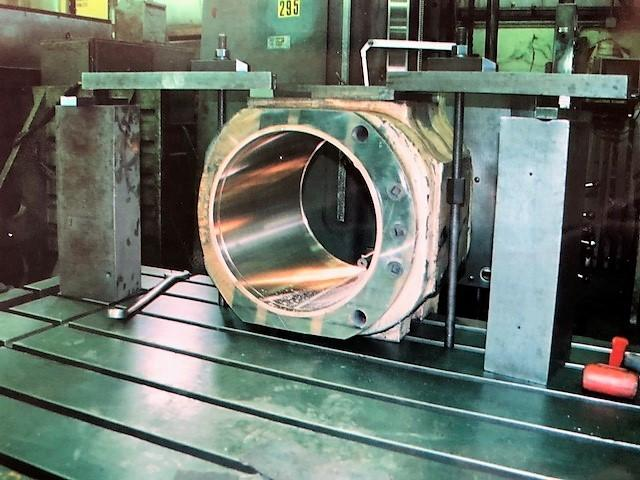
Safety Consideration
The use of large CNC machining in industrial settings requires special attention to safety protocols due to the potential for injury, damage, or injury. Operators should follow all manufacturer’s instructions, wear protective gloves and clothing, confirm that all parts are secure, use cutting tools specifically designed for large CNC machines, and inspect conditions such as lubrication points and belts, pulleys, and motor bearings monthly.
Applications of Large CNC Machining
When it comes to the fabrication of big parts and components with complex geometries, nothing beats the versatility and accuracy of CNC. The aircraft, automotive, construction, and healthcare industries—as well as other fields where accuracy and precision are crucial—all extensively employ this technology.
The ability to accurately and repeatedly create complex parts is a major benefit of large CNC machining. Components are manufactured through the use of computer-controlled machines for cutting and shaping metals, plastics, and composites to exact specs.
Large CNC machine is widely used in the aerospace business to produce landing gear components, engine casings, and turbine blade. These components require rigorous manufacturing standards to ensure their reliability under severe circumstances such as high heat or pressure.
Similar to other industries, the car industry uses extensive CNC machining to create parts like transmission cases, engine blocks, and suspension components. The production of these components requires a great deal of precision and accuracy to fulfill their performance criteria.
Large CNC machining is also used in the defense sector to produce parts for weapons and vehicles. These components must be manufactured with the utmost precision and quality to guarantee the equipment’s dependability and security.
Large CNC machining is useful in the construction business for making things like tunnel lining, bridge girders, and even sculptures. To make sure that project deadlines and costs are met, these parts must be designed carefully and made quickly.

Manufacturing components for prosthetics, medical implants, and surgical tools typically involves large CNC machining in the medical industry. To make sure medical treatments are safe and effective, these parts must be made with great accuracy.
Generally speaking, large CNC machining is a useful technology for any business that necessitates the fabrication of sizable components to exact specifications. Manufacturers in a variety of industries use it because of its ability to consistently and accurately create complex parts.
Frequently Asked Questions (FAQs)
What are some industries that benefit from large CNC machining?
Many different sectors, such as aerospace, automobile, marine, and construction, rely heavily on large CNC machining. These industries often require highly precise and specialized components, making large CNC machining an ideal solution for their needs.
How does large CNC machining differ from conventional machining?
The primary distinction between CNC and traditional machining is the use of computers instead of human operators. As a result, the output can be accelerated while maintaining higher standards of accuracy and uniformity.
How important is the accuracy of large CNC machine parts?
The accuracy of large CNC machine parts is extremely important, especially in applications where safety and reliability are critical. Small mistakes can result in costly errors, damage to equipment, or even injury to workers, so the precision of large CNC machining is essential.
What should I consider when choosing a vendor for large CNC machining services?
When choosing a vendor for large CNC machining services, you should consider their experience, track record, and capabilities. It’s also crucial to find a supplier that places a premium on open lines of communication and teamwork so that they can adapt to your unique specifications.
How important are CAD/CAM tools for large CNC machining?
Large-scale CNC machining requires CAD/CAM tools for creating precise 3D models of the components or parts being machined. During the machining process, this software produces the machine code used to operate the CNC machine.
What are the key differences between large and small CNC machining?
When comparing large and small CNC machining, the primary difference is the size of the manufactured parts or components. CNC machines with a large working area and sturdy construction are able to machine much heavier and bigger parts than smaller machines.
Conclusion
Concluding, large CNC machining can be beneficial for many manufacturing applications. With the capability to carry out modifications to large components, including those made from modern materials such as aluminum and lightweight steels, it removes some of the restraints in the parts design process.
Not only does this mean more complex designs and better performance, but it also allows for smoother curves, higher tolerance levels, and easier assembly processes. Furthermore, CNC machining can help reduce cycle times and increase production.
With shorter lead times, larger runs can be achieved with minimal stress or disruption to existing operations. Because of this, a lot of businesses have taken on big projects that would have been very expensive or hard to do otherwise.


